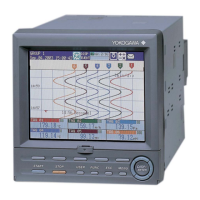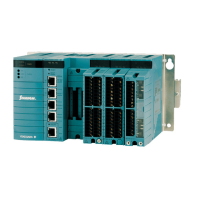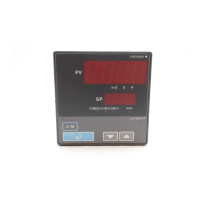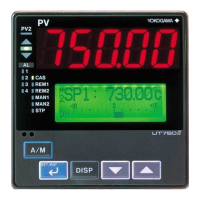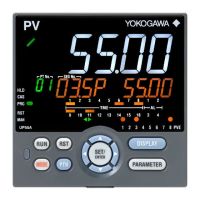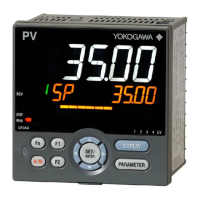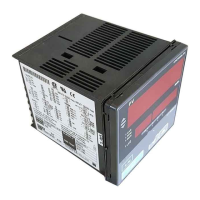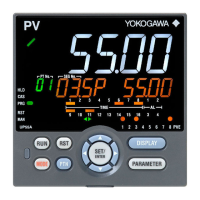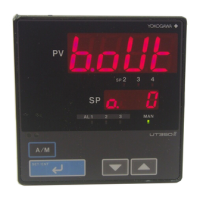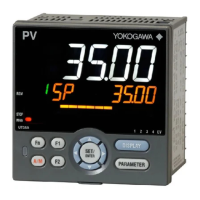App-8 IM 04L20A01-01E
Relational Computation
The types of data that can be used in equations are measured data, computed data,
constants (K01 to K30), communication interface data (C01 to C12), and the remote
control terminal conditions (D01 to D08). You can specify a computing equation that
performs relational computation on a computing element (Example: 01.LT.ABS(02)).
EXAMPLE:
02.LT.03
The computed result will be “1” if the measured value of channel 2 is less than the
measured value in channel 3, otherwise the value will be “0.”
02.GT.03
The computed result will be “1” if the measured value of channel 2 is greater than the
measured value in channel 3, otherwise the value will be “0.”
02.EQ.03
The computed result will be “1” if the measured value of channel 2 is equal to the
measured value in channel 3, otherwise the value will be “0.”
02.NE.03
The computed result will be “1” if the measured value of channel 2 is not equal to the
measured value in channel 3, otherwise the value will be “0.”
02.GE.03
The computed result will be “1” if the measured value of channel 2 is greater than or
equal to the measured value in channel 3, otherwise the value will be “0.”
02.LE.03
The computed result will be “1” if the measured value of channel 2 is less than or equal
to the measured value in channel 3, otherwise the value will be “0.”
Logical Computation
The computation is performed using e1 and e2 which are identified as either “zero” or
“non zero”. The types of data that can be used in equations are measured data,
computed data, constants (K01 to K30), communication interface data (C01 to C12), and
the remote control terminal conditions (D01 to D08). You can specify a computing
equation that performs logical computation on a computing element.
AND Logical product
Syntax:e1ANDe2
Condition: If both e1 and e2 are “non 0”, the operation results in “1”, otherwise in
“0.”
Status: e1 = 0, e2 = 0
e1ANDe2 = 0
e1 ≠ 0, e2 = 0
e1ANDe2 = 0
e1 = 0, e2 ≠ 0
e1ANDe2 = 0
e1 ≠ 0, e2 ≠ 0
e1ANDe2 = 1
Appendix 2 Meaning and Syntax of Equations

